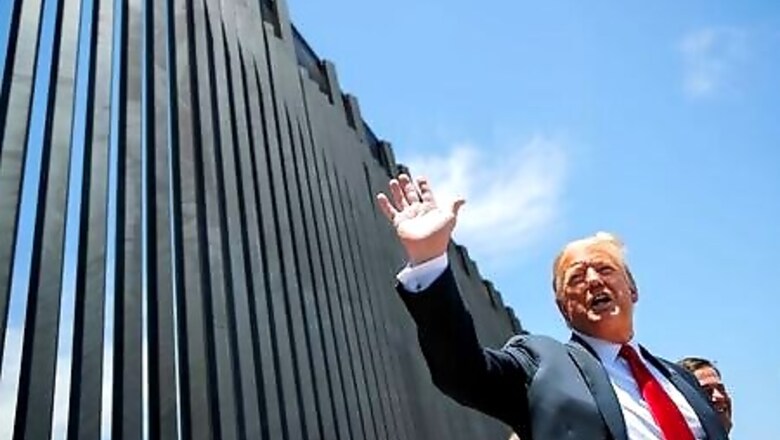
views
LOS ANGELES U.S. President Donald Trump took a hard line on immigration in the 2016 election, making it his signature campaign issue. Now, as he runs for re-election, he is highlighting the promises he says he kept and warning that his Democratic challenger Joe Biden will roll them back.
Trump pledged to drastically restrict both the number of immigrants crossing the U.S.-Mexico border and ramp up arrests of those living and working illegally in the country. His policies have faced legal challenges and a backlash from immigration advocates.
Here are the major immigration promises he campaigned on in 2016.
“EXTREME VETTING” AND “PREVENTING MUSLIM IMMIGRATION”
During his 2016 campaign, Trump vowed to subject people from certain countries to increased scrutiny before granting them visas and called for “a total and complete shutdown of Muslims entering the United States until our country’s representatives can figure out what is going on.”
One of his first acts as president was to sign an order banning entry to immigrants from seven Muslim-majority countries. A federal court blocked the initial ban, but in 2018 the Supreme Court upheld an amended version that has since been expanded to other countries.
BUILDING A WALL
“Build that wall” was one of the most common refrains at Trump rallies leading up to the 2016 election and remains a central tenet of Trump’s immigration policy. He vowed he would build 1,000 miles (1,609 km) of wall, about half the length of the U.S.-Mexico border, and that Mexico would pay for it.
As of mid-August, U.S. Customs and Border Protection reported it planned to build or replace 738 miles (1,190 km) of border wall, with $15 billion allocated to fund it. None of the money has come from Mexico.
The agency says so far it has built 275 miles (443 km) of border wall under the Trump administration, but most of that replaced previous structures. Only about 30 miles (48 km) of wall have been built in places that did not previously have barriers.
ENDING “CATCH AND RELEASE”
Trump regularly vowed in his 2016 campaign to end the “catch and release” of immigrants who crossed the Mexico border – the practice of allowing immigrants detained by U.S. Immigration and Customs Enforcement (ICE) to be released from detention while going through immigration court proceedings.
The administration has on several occasions in announcements and memoranda said it is ending “catch and release,” though it has at times continued to release immigrants into the interior of the country.
Since March, however, the majority of people apprehended at the Mexico border have been immediately expelled under an order the administration said aimed to curb the spread of the novel coronavirus. That and other border restrictions has contributed to an overall decline in the number of immigrants arrested and detained at the border and in the United States.
One way the administration limited releases of immigrants was through a “zero tolerance” policy implemented in 2018, which sought to criminally prosecute suspected border crossers. The policy led to the separation of thousands of parents from their children, including babies and toddlers.
The move sparked outrage and the administration reversed course under pressure, with Trump signing an executive order to end the policy just months after it was officially announced. Hundreds of families, however, have continued to be separated at the U.S.-Mexico border using different justifications, the American Civil Liberties Union has said.
CRACKING DOWN ON “SANCTUARY CITIES”
Trump during the 2016 campaign repeatedly singled out cities and states he said had “sanctuary” policies that protected immigrants living in the country illegally and limited cooperation with federal immigration enforcement.
In January 2017, days after taking office, Trump signed an executive order aimed at withholding federal funding from jurisdictions with such policies.
Four appeals courts have largely ruled that the federal government cannot withhold funds because of sanctuary policies, though a federal appeals court in July sided with the Trump administration on the issue. The split in decisions may bring the question before the Supreme Court, which in June declined to take up a case on three pro-migrant laws in California.
Disclaimer: This post has been auto-published from an agency feed without any modifications to the text and has not been reviewed by an editor
















Comments
0 comment